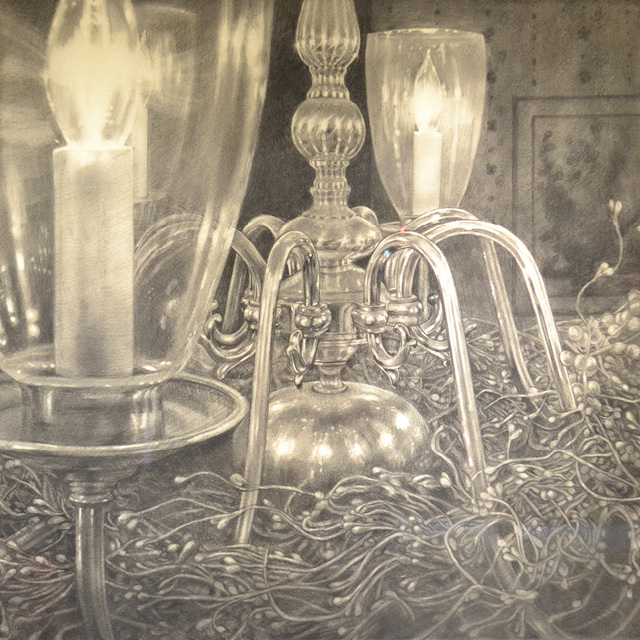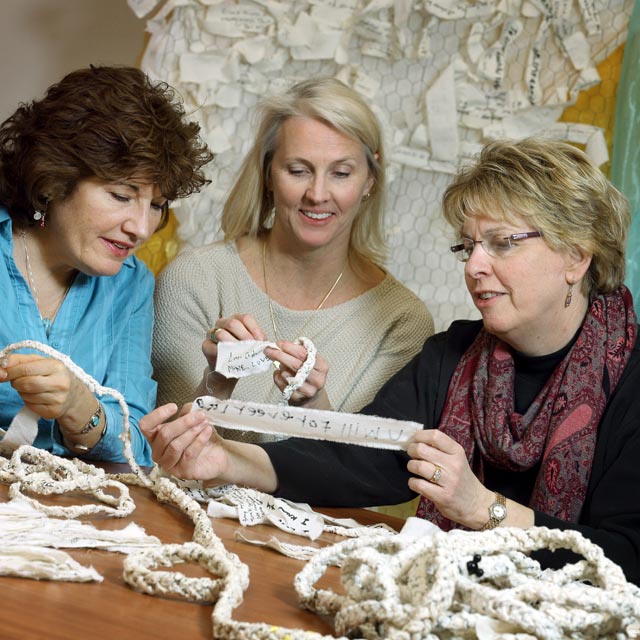Joe Riggs recalls the moment he stepped into a patient’s distressed frame of mind. He was working in his office at Johns Hopkins Community Physicians (JHCP) when he heard a loud voice, sharp with anxiety, in the hall. An expectant mother was refusing to enter the sonography room for an ultrasound. When Riggs asked if he could help, she pointed to the photo emblem of a blackbird on the room panel.
“She told me, ‘I’m not going in there. Look what bird you have on that door! It’s bad luck!’”
After listening to her concerns, Riggs invited her into his office to search the internet for stories about the bird’s symbolism. They found that blackbirds represent wisdom, power and beauty, as well as the hope expressed in the Beatles’ classic song “Blackbird.”
Reassured, the patient went ahead with her appointment. And Riggs, assistant director of operations at JHCP, gained a deeper appreciation of the need to consider multiple points of view when designing and decorating a health care environment.
The JHCP practice at Remington, which opened in 2016, stands as an innovative model of patient-centered design. There are no individual providers’ offices. All care providers work together in a centralized area, to promote teamwork and trim patient wait times. To make the experience feel more patient-friendly, each examination room is named after a Baltimore landmark or a bird portrayed in a photo on the exterior door.
And thanks to a recent partnership with the Maryland Institute College of Art (MICA), the exam rooms in the practice now feature works by student artists. Patients entering the internal medicine examination rooms will find art depicting familiar Baltimore landmarks — such as the Domino Sugars sign, Patterson Park Pagoda, Fort McHenry and Camden Yards — while the 14 Gyn/Ob rooms display robins, flamingos, owls, cranes and other birds that suggest the beauty of nature.
The artwork was the result of a semesterlong class at MICA created by faculty member Gina Gwen Palacios and associate dean Michael Weiss, which enabled students to imagine their work through the eyes of patients they would never meet.
Which is why Riggs told them the blackbird story. “It was important for students to understand the impact that art can really have on a unique audience,” he says.
“The biggest thing for me was thinking about the viewer and the impact our artwork can have on someone,” says MICA student Marisol Ruiz. “Take the rooms with the birds: Those birds are being seen by a lot of expectant mothers. My classmates and I talked about what kind of feelings we want to give to them while they’re waiting for some news.”
The blackbird/sonography room now features a “tree of life” painting rendered in soothing shades of blue and white, with clusters of red berries. Ten tiny blackbirds perch on its branches. MICA student Laurel Stewart has created a piece that is fanciful, welcoming and reassuring.
It’s one of many paintings that elicit praise, according to Riggs. “Every day, patients comment on how wonderful the art is and how it makes them feel,” he says. “We also get great feedback from our own team. Our staff members are providing care to patients in the exam rooms all day long, and their work environment and sense of well-being is really important. They say having artwork in their work environment has brought life to our practice.”
“This is a win for everyone,” Riggs adds. Plans now call for commissioning artwork from MICA students for additional Johns Hopkins Community Physicians practices.


